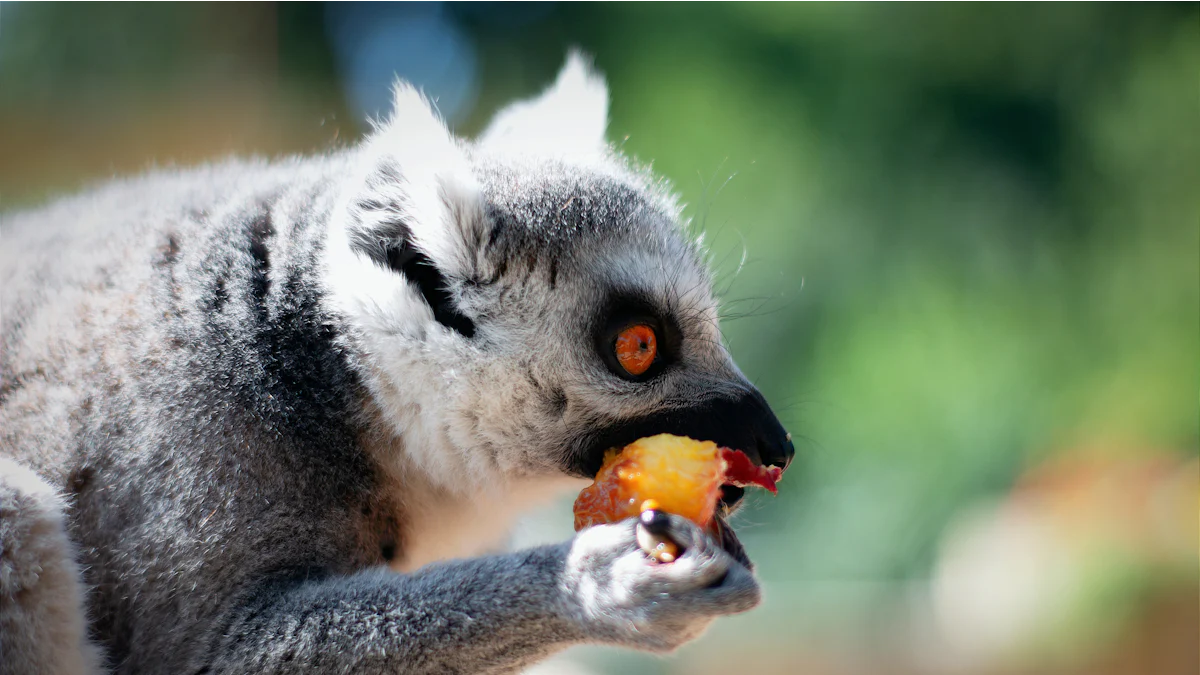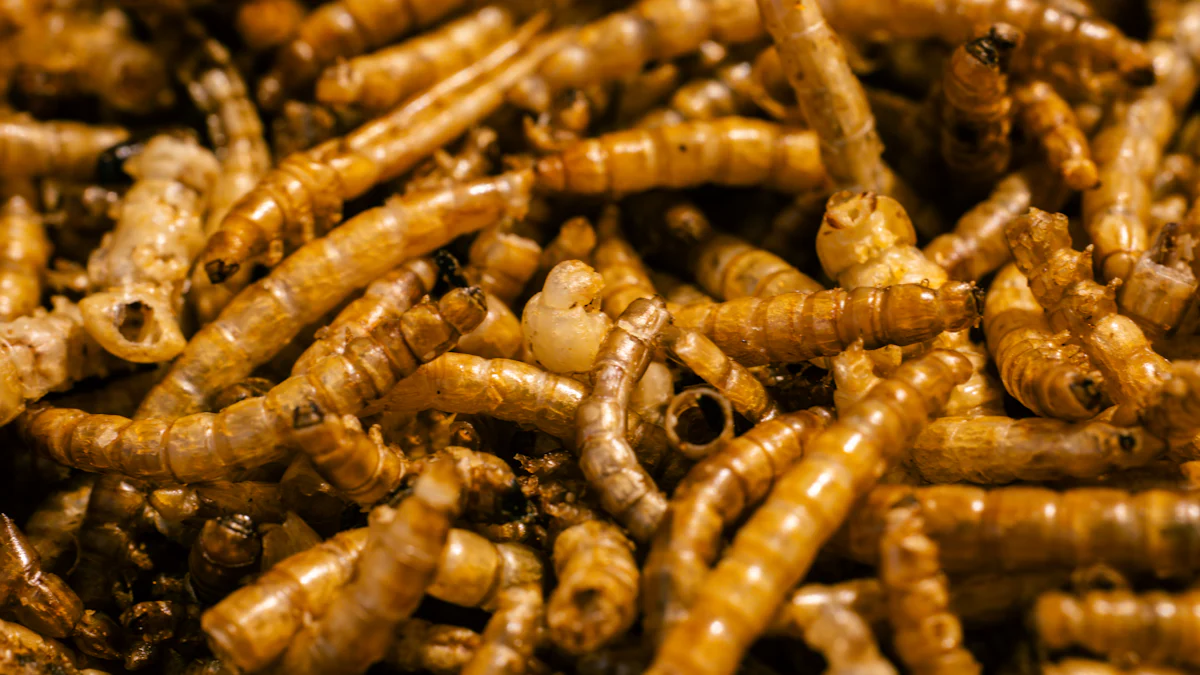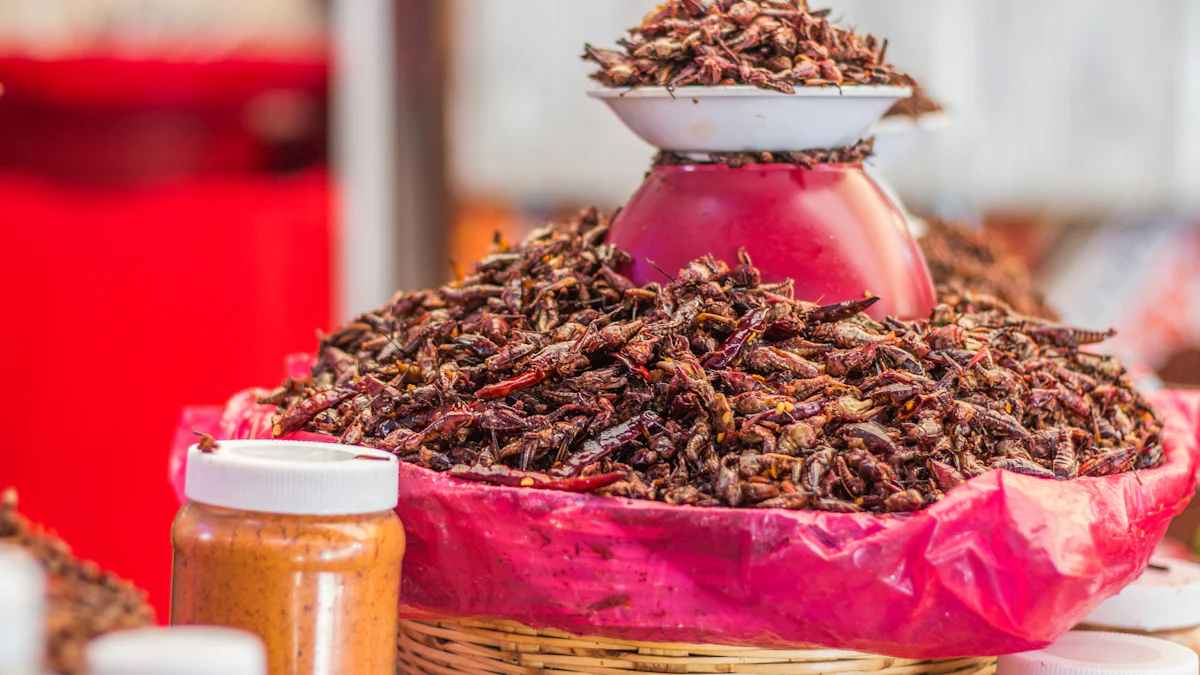
Have you ever noticed how much animals love mealworms? Birds, sugar gliders, and frogs can’t seem to get enough of them! These little larvae, called Tenebrio Molitor, are packed with protein, healthy fats, and vitamins like B12. They’re also clean to handle and perfect for your mealworm feeder.
Key Takeaways
- Mealworms are healthy snacks with 48% protein and vitamins. They are a great food choice for many animals.
- These larvae are simple to digest, so they work well for animals like dogs and cats with sensitive stomachs.
- Mealworms can be given live or dried. This makes them easy to use for different feeding needs and tastes.
Why Mealworms Are a Great Food Source
Mealworms are like the ultimate snack for animals. They’re packed with nutrients, easy to digest, and can be served in different ways to suit various feeding needs. Let’s dive into why they’re such a fantastic food source.
High in Protein and Nutrients
Mealworms are tiny powerhouses of nutrition. Did you know they contain 48% protein by weight? That’s almost as much as soy, which has 50%! But mealworms don’t stop there. They’re loaded with essential vitamins and minerals, like potassium, copper, and zinc. They even have more vitamin B12 than beef, which is great for energy. Plus, they’re rich in iron, calcium, and magnesium, all of which help animals stay healthy and strong. It’s no wonder so many creatures love them!
Fun Fact: Mealworms also provide linoleic acids, which are important for healthy skin and fur in animals.
Easy to Digest for Many Animals
One of the coolest things about mealworms is how easy they are to digest. Studies show that their amino acids are over 90% digestible for animals like dogs and cats. Even roosters, often used in research, had no trouble breaking them down. This makes mealworms a top choice for animals with sensitive stomachs or specific dietary needs.
Versatile for Different Feeding Needs
Mealworms are super flexible when it comes to feeding. You can serve them live, which many animals find irresistible, or dried, which is convenient and mess-free. They’re even used in livestock feed as a soy replacement. Whether you’re feeding backyard birds, pet reptiles, or even fish, mealworms can fit right into their diet.
Tip: Dried mealworms are perfect for long-term storage and easy feeding, while live ones are great for animals that enjoy the thrill of catching their food.
Animals That Love Eating Mealworms

Mealworms are a hit with so many animals! Whether it’s birds, reptiles, fish, or small mammals, these little larvae are a treat they can’t resist. Let’s explore which animals love mealworms and why they’re such a favorite.
Birds That Enjoy Mealworms
Birds go crazy for mealworms, especially during nesting or migration. They’re packed with fiber, fat, and protein, which birds need to stay strong and healthy. I’ve noticed that mealworms attract a wide variety of birds to my yard. It’s like hosting a bird party!
Here are some common birds that love mealworms:
- Blackbirds
- Robins
- Blue Tits
- Great Tits
- Starlings
- Thrushes
- House Sparrows
Mealworms are especially helpful for insect-eating birds. They provide extra protein when birds are raising chicks or surviving harsh winters. Plus, they help with pest control in gardens. It’s a win-win for everyone!
Tip: Place mealworms in a feeder or scatter them on the ground to watch birds flock to your yard.
Reptiles and Amphibians That Eat Mealworms
Reptiles and amphibians also enjoy mealworms as part of their diet. They’re a staple food for many species, including:
- Geckos (like leos and cresties)
- Bearded dragons
- Chameleons
- Water dragons
However, it’s important to feed them mealworms in moderation. The hard exoskeletons can cause digestion issues, especially for reptiles. Freshly molted mealworms are a safer option since they’re softer and easier to digest.
Note: Always monitor your pet’s eating habits to avoid risks like impaction, which can be harmful.
Fish That Benefit from Mealworms
Fish, especially in aquariums or ponds, thrive on mealworms. They’re a nutritious treat that supports growth and health. Here’s a quick look at how mealworms benefit different fish species:
| Fish Species | Benefits of Mealworms |
|---|---|
| Koi | High in protein and fats, great for young fish, and promotes natural feeding behavior. |
| Cichlids | Perfect for their omnivorous diet and provides enrichment. |
| Tropical Fish | Enhances a varied diet and can be cut to size for smaller fish. |
Feeding live mealworms to fish can also encourage natural hunting behaviors, making mealtime more exciting for them.
Small Mammals That Can Eat Mealworms
Small mammals like hamsters, hedgehogs, and sugar gliders love mealworms too. They’re not just a tasty snack but also a great source of protein for muscle growth. The vitamins and minerals in mealworms promote overall health and keep their fur shiny.
However, mealworms should only be a part of a varied diet. Overfeeding can lead to weight gain due to their high fat content. Here’s a quick guide to keep in mind:
| Dietary Consideration | Description |
|---|---|
| Varied Diet | Include mealworms as a treat, not the main food source. |
| High Fat Content | Too many mealworms can lead to obesity. |
| Weight Management | Monitor portion sizes to keep your pet healthy. |
Fun Fact: Mealworms encourage natural foraging behaviors in small mammals, making feeding time more engaging for them.
Mealworms truly are a versatile and nutritious treat for so many animals. Whether you’re feeding birds, reptiles, fish, or small mammals, they’re sure to love it!
How to Feed and Store Mealworms

Mealworms are a fantastic treat for many animals, but knowing how to feed and store them properly makes all the difference. Let me share some tips that have worked wonders for me.
Using a Mealworm Feeder for Birds and Wildlife
A mealworm feeder is a game-changer if you want to attract birds and other wildlife to your yard. I’ve noticed that using one brings a variety of birds, especially during nesting or migration seasons. Here’s why it works so well:
- Mealworms provide essential nutrients like protein and fat, which birds need for growth, feather laying, and chick feeding.
- They’re a natural food source that parent birds can feed directly to their nestlings.
- During winter, mealworms help birds maintain warmth and energy.
When choosing a mealworm feeder, look for designs that exclude larger birds and mammals. A roof is also helpful to keep mealworms dry, and a durable mesh prevents rusting. I love feeders with easy-to-clean food holders—they save so much time!
| Design Feature | Description |
|---|---|
| Excludes larger birds and mammals | Keeps food safe and prevents tipping. |
| Sheds rain and protects from sun | Keeps mealworms dry and fresh. |
| Easy access for bluebirds | Openings of at least 1.5 inches make it easier for smaller birds to feed. |
Live vs. Dried Mealworms: Which to Choose
Choosing between live and dried mealworms depends on your animals and your preferences. Birds seem to prefer live mealworms because their wriggling motion triggers hunting instincts. However, dried mealworms are more convenient and last longer.
| Pros of Live Mealworms | Pros of Dried Mealworms |
|---|---|
| High in fat and protein | Retain nutrients when dried |
| Eagerly consumed by animals | Long shelf life of up to 1 year |
| Encourage natural hunting behavior | Easy to store and handle |
If you’re feeding fish or ducks, dried mealworms are perfect since they float. For reptiles or amphibians, live mealworms are better because they mimic their natural prey. I usually keep both on hand to meet different needs.
Proper Storage to Keep Mealworms Fresh
Storing mealworms correctly keeps them fresh and nutritious. For live mealworms, I store them in the fridge at 45-50°F. This keeps them dormant for up to 10 weeks. Once a week, I take them out for 24 hours to let them feed at room temperature.
Here are some tips I follow:
- Monitor the fridge temperature to prevent rapid pupation.
- Add a small piece of carrot or potato to keep bedding moist but not wet.
- Rotate stock and use the oldest mealworms first.
For dried mealworms, I store them in an airtight container in a cool, dry place. Avoid sunlight and high humidity to prevent spoilage. A dark cupboard works perfectly for this.
By following these steps, I’ve kept my mealworms fresh and ready to feed whenever needed. Trust me, your animals will thank you!
Mealworms are a fantastic addition to any feeding routine. They’re packed with protein, essential nutrients, and even linoleic acids, making them a treat for birds, reptiles, fish, and small mammals. I’ve seen how much animals enjoy them, especially during nesting or growth periods. Add mealworms to your pets’ diet—they’ll love it! 🐦🐾
FAQ
What animals benefit the most from mealworms?
Birds, sugar gliders, and frogs love mealworms. These larvae, also called Tenebrio Molitor, are nutrient-rich, high-protein treats that fit perfectly into their diets.
Can I feed mealworms to my pet every day?
I recommend using mealworms as a treat, not a daily staple. Their high fat content can lead to weight gain if overfed.
How do I keep live mealworms fresh?
Store them in the fridge at 45-50°F. Add a carrot or potato slice for moisture. Let them feed at room temperature weekly to stay healthy.


